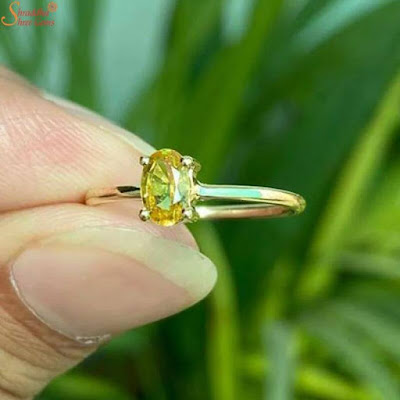What is Gemstones | Best Gemstone Shop in Delhi NCR
Gemstones are nature's exquisite creations that have captivated humanity for centuries. These precious minerals, forged deep within the Earth's crust over millions of years, possess exceptional beauty, rarity, and cultural significance. From sparkling diamonds to mesmerizing emeralds, gemstones have been cherished and adorned as symbols of wealth, power, spirituality, and love. In this blog, we will explore the fascinating world of gemstones, uncover their allure, delve into their classifications, and unravel their historical and modern significance
I. Origins and Formation
Gemstones originate through complex geological processes that unfold over extended periods. They are formed when minerals crystallize under specific temperature and pressure conditions deep within the Earth's mantle. Volcanic activity, metamorphism, and the slow cooling of molten rock contribute to the formation of gemstones. The unique combination of chemical composition, crystal structure, and impurities within these minerals gives rise to their diverse colors and properties.
II. Classification of Gemstones
Gemstones can be classified based on their composition, structure, and properties. The most common classification is the traditional "precious" and "semi-precious" categorization. Precious gemstones include diamonds, rubies, sapphires, and emeralds, while semi-precious gemstones comprise a wide array, such as amethyst, citrine, turquoise, and garnet. Another classification is based on the mineral groups, with gems belonging to categories such as corundum, beryl, quartz, and more.
III. Allure and Symbolism
Gemstones possess an irresistible allure due to their vibrant colors, unique optical properties, and inherent rarity. Their beauty has captivated civilizations throughout history, resulting in gemstones being imbued with profound symbolism and cultural significance. Diamonds are often associated with love, purity, and eternal commitment, while rubies symbolize passion and power. Emeralds have long been regarded as a symbol of rebirth and growth, evoking a sense of harmony and wisdom.
IV. Historical Significance
Gemstones have played prominent roles in human history. They have adorned the crowns, jewelry, and artifacts of royalty, nobility, and religious figures across civilizations. Ancient Egyptians prized lapis lazuli and turquoise, while the Moguls of India revered exquisite diamonds and emeralds. Gemstones have been regarded as talismans, bringing luck, protection, and spiritual enlightenment to their owners
V. Modern Applications
In modern times, gemstones continue to be treasured for their aesthetic appeal and enduring value. Beyond jewelry, gemstones find application in various industries. Diamonds, with their exceptional hardness, are used extensively in industrial cutting, drilling, and polishing. Gemstones also find their way into technology, as tiny rubies and sapphires are employed in lasers, optics, and microelectronics.
VI. Care and Evaluation
Caring for gemstones is crucial to maintain their brilliance and longevity. Each gemstone requires specific cleaning and storage methods to prevent damage. Evaluating gemstones involves assessing their color, clarity, cut, and carat weight. Gemologists use various tools and techniques to determine a gemstone's authenticity, ensuring transparency and trust in the gemstone trade.
Conclusion
Gemstones continue to enchant humanity with their exceptional beauty, rarity, and symbolism. They bridge the gap between nature's grandeur and human creativity, serving as timeless expressions of love, status, and spirituality. From ancient civilizations to the modern era, gemstones have fascinated and inspired generations, leaving an indelible mark on our collective history. As we explore their mesmerizing depths, gemstones remind us of the Earth's enduring beauty and the profound connection between mankind and nature.

.jpg)

Comments
Post a Comment